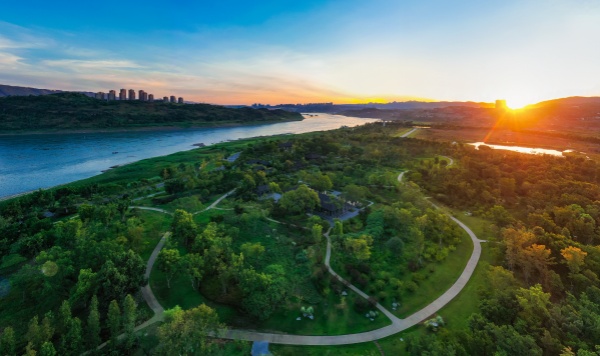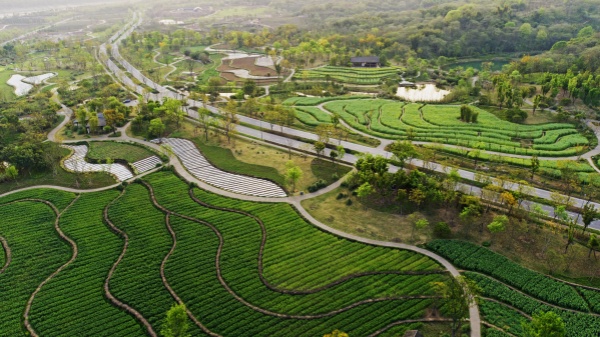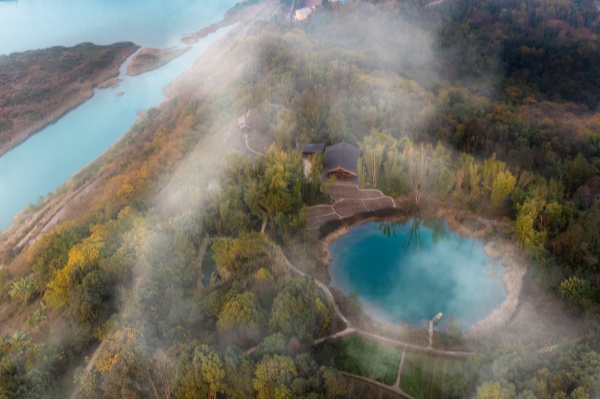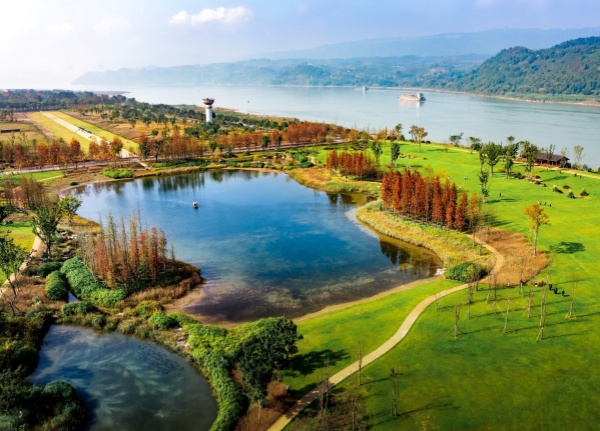The second phase of the ecological restoration project of Guangyang Island in Southwest China’s Chongqing Municipality has been completed.
The completion marks the end of the key lifestyle project in Chongqing. The second phase was intended to develop a national green practice industrial innovation base demonstrating the adage "lucid waters and lush mountains are invaluable assets", and to establish a green development demonstration zone in the Yangtze River Economic Belt.

A bird’s-eye view of Guangyang Island in Southwest China’s Chongqing Municipality [Photo/sasac.gov.cn]

A view of Guangyang Island in Chongqing [Photo/sasac.gov.cn]
As an ecological screen in the upper reaches of the Yangtze River, the second phase of the ecological renovation project focused on protection and restoration of the entire island and improvement of the first phase of the project. It covers about 9.67 square kilometers of slope, a dam and surrounding mountainous areas.
Supporting ecological facilities and green buildings, as well as mountainous roads were built to promote ecological improvement.

A view of Guangyang Island in Chongqing [Photo/sasac.gov.cn]
The mountains, rivers, forest, farmland, lakes, grassland and the roads on the island have been categorized for restoration with different technologies and in different patterns.

A bird’s-eye view of Guangyang Island in Southwest China’s Chongqing Municipality [Photo/sasac.gov.cn]

A view of Guangyang Island in Chongqing [Photo/sasac.gov.cn]
Upon completion of the entire project, Guangyang Island will have 627 species of plants, and 458 of animals. The footpath around the island is 11 kilometers long and has been called “the most beautiful ecological footpath” by Chongqing residents as it provides full views of the river, the gorge, the mountains, the island and the bay.
China State Construction Engineering Corporation (CSCEC) contributed to the ecological restoration project.
(Executive editor: Xie Yunxiao)